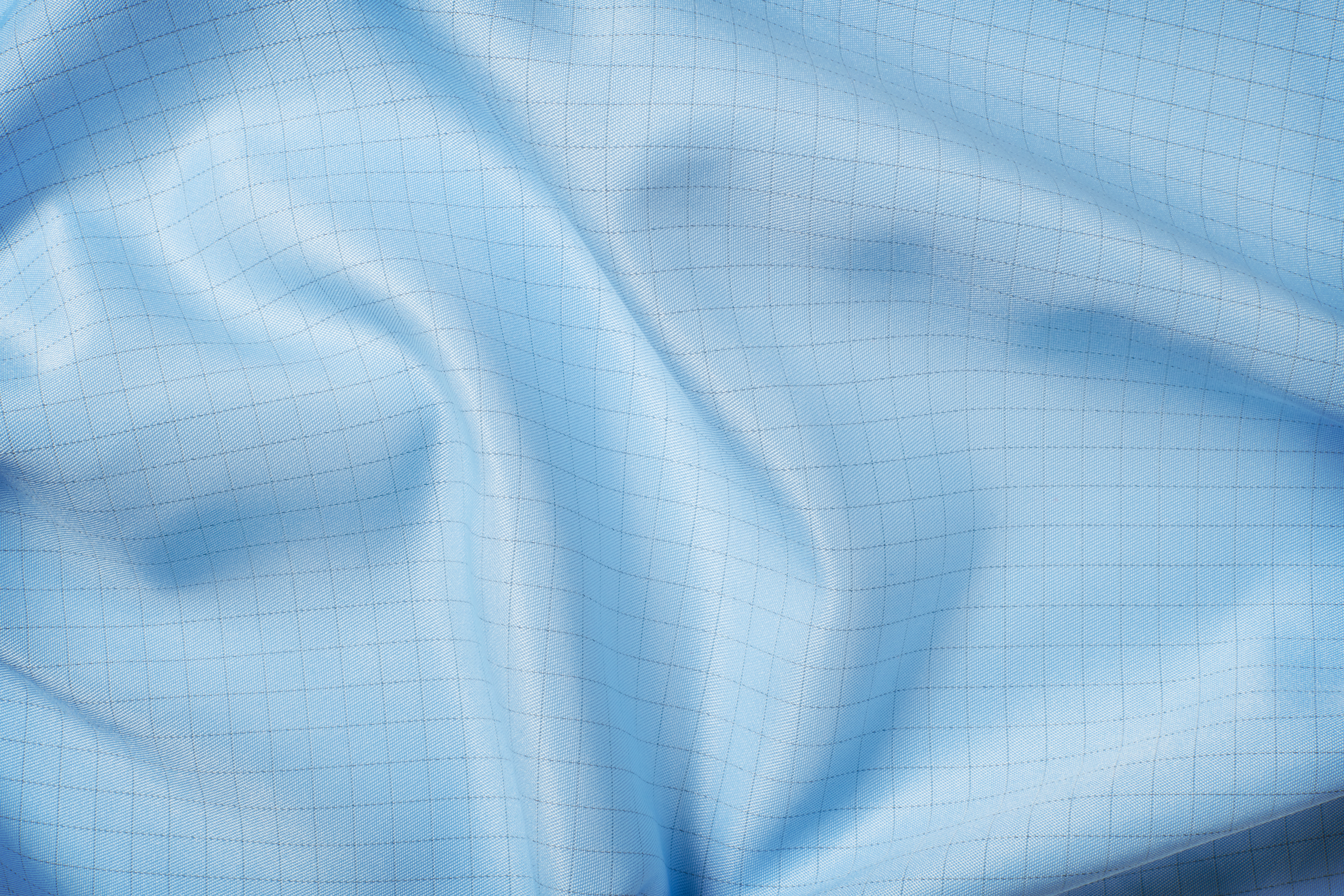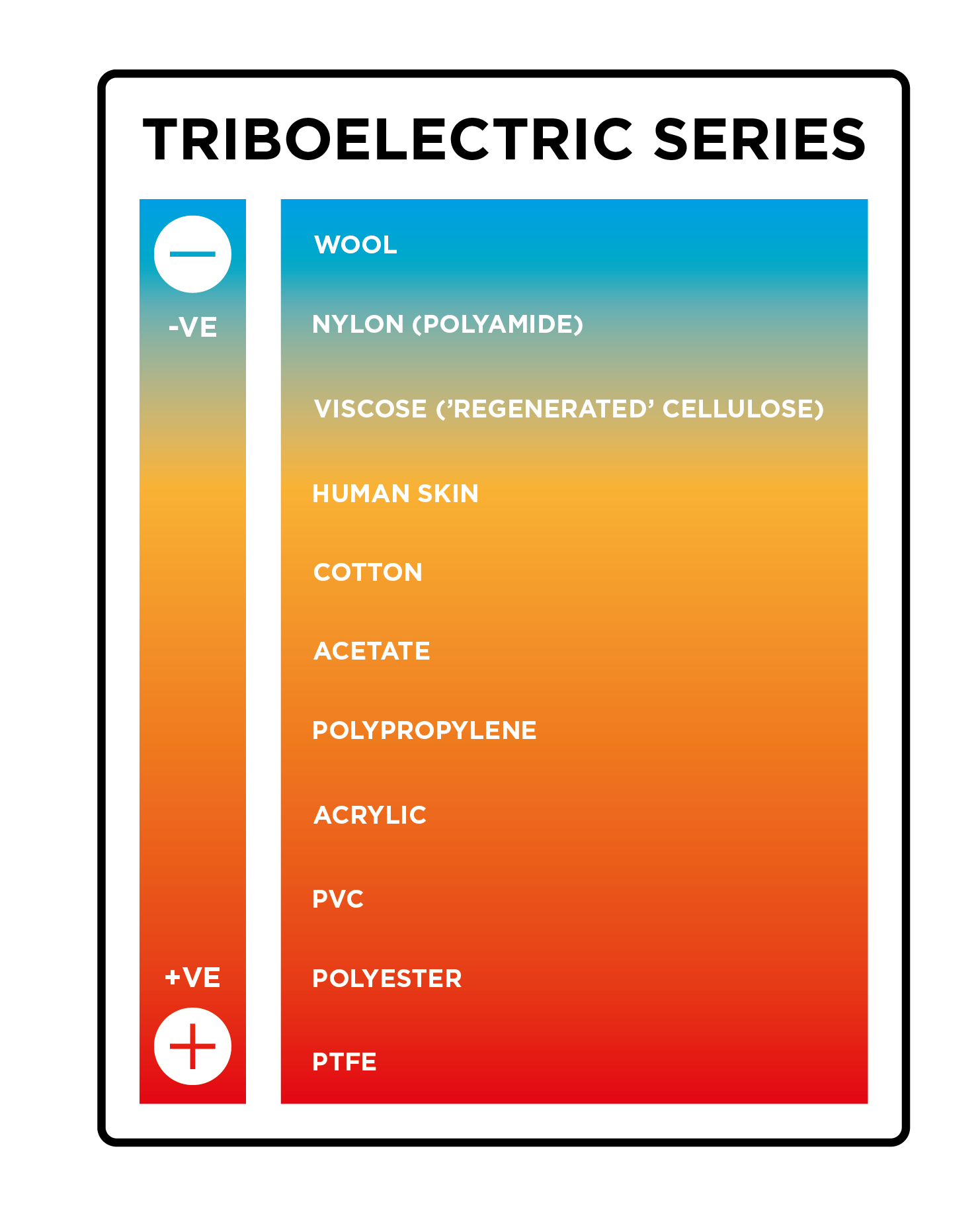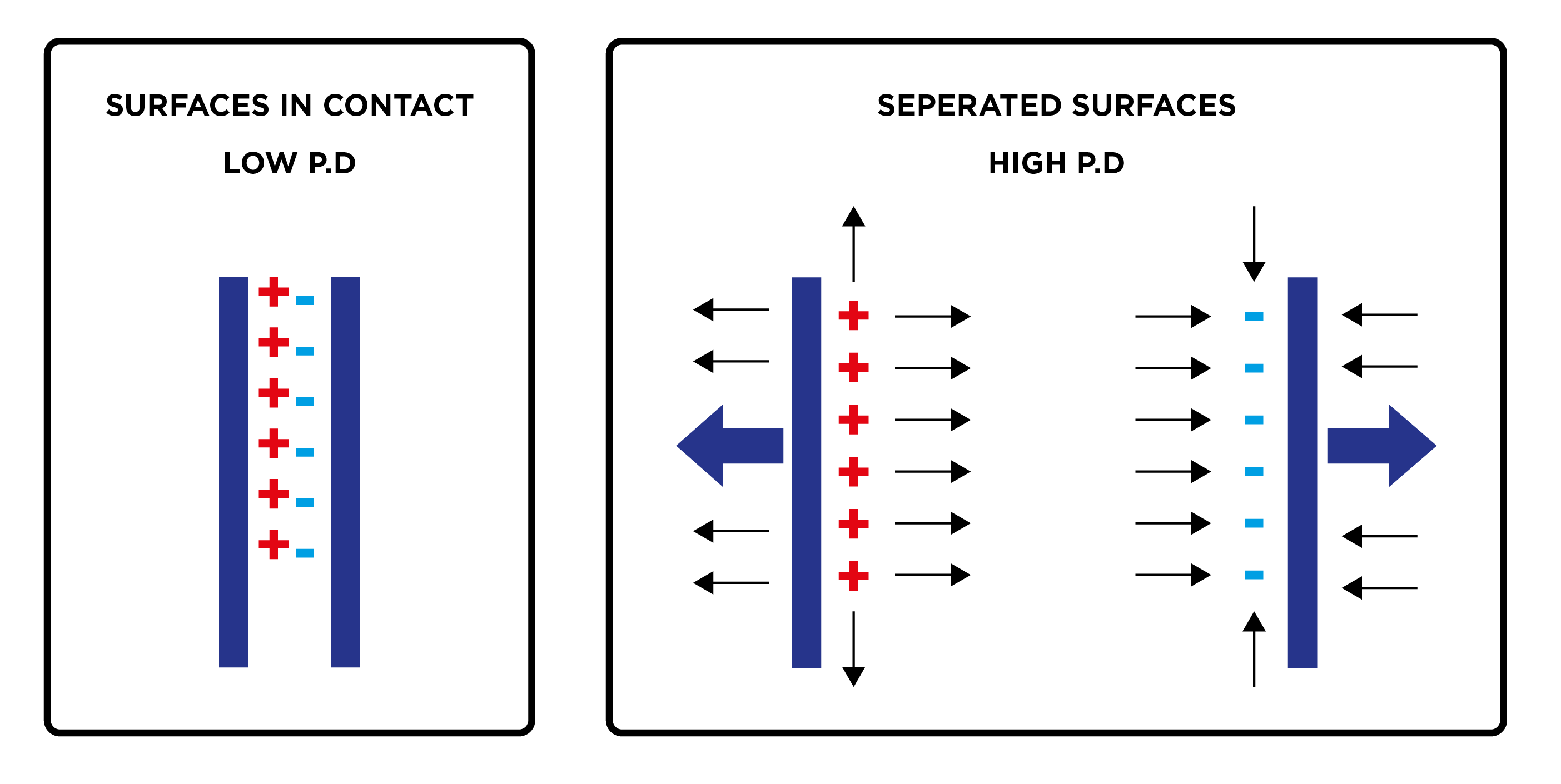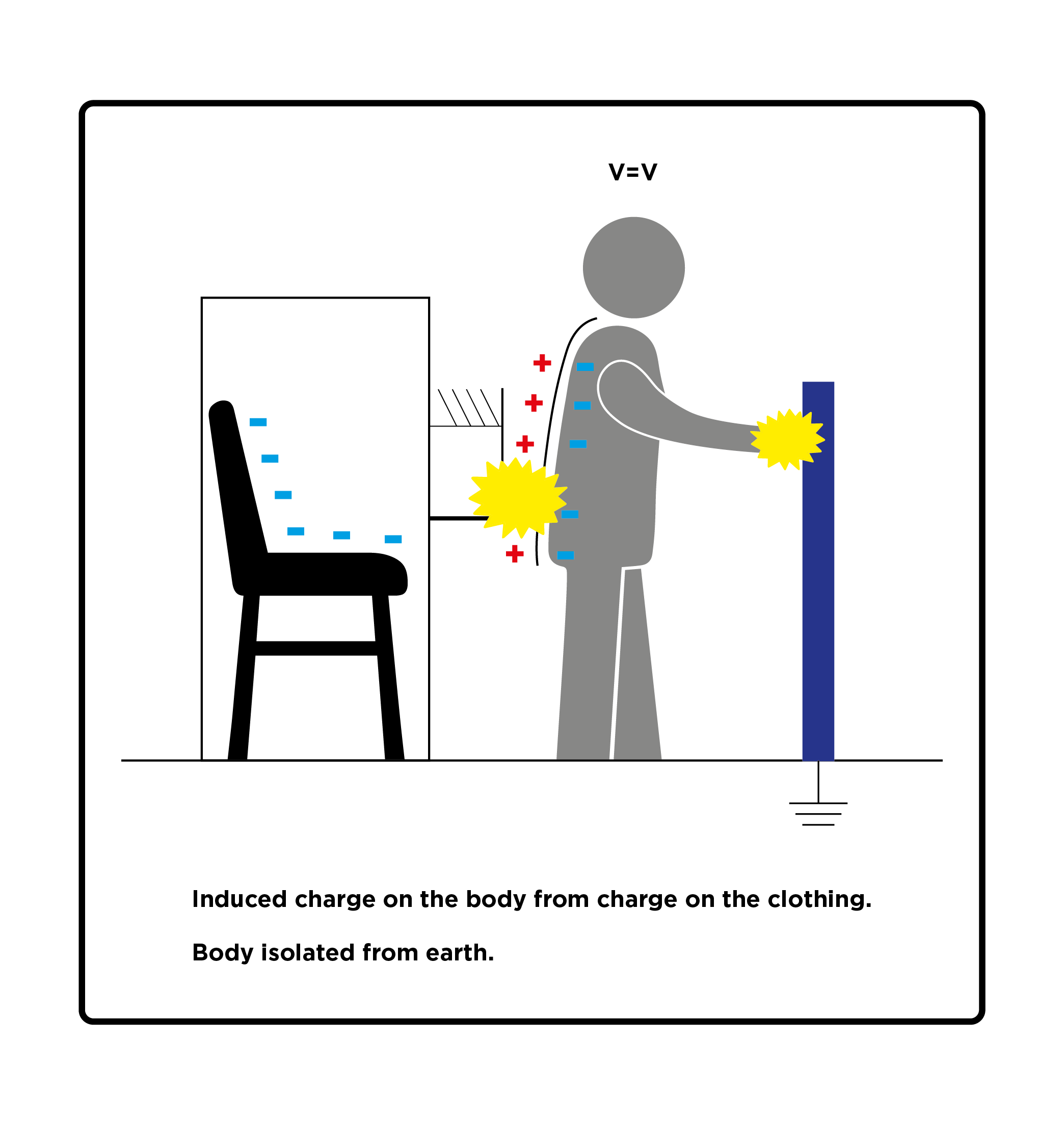Static: the how’s and why’s related to clothing

Static electricity can cause a host of problems, from garments that have an undesirable cling, to damage to sensitive electrical equipment, and in extreme cases explosion. This article discusses how static is created from clothing, why it’s a problem and how to control it.
Triboelectric Series
A triboelectric charge is an electrical charge generated by frictional movement or separation of two surfaces. Fibres of different chemical types will produce more static charge when rubbed together than fibres of the same type. Those fibres of higher electrical resistance, for example, the insulators are slow at losing any charge by conduction. Fibre types can be graded according to whether they are electropositive of electronegative.
Human skin has the same electrochemical nature as cotton or acetate. If a fabric of fibre type high in the series is rubbed against another lower down the series the lower type will become charged negatively and the higher type positively. The further apart the fibre types are in the series the greater the static charge.

Charging by Contact
This is the most usual mechanism for charging. When the two materials are rubbed together the contact of the materials sets up a small potential difference or voltage across the interface of these surfaces – like skin to polyester or maybe cotton underwear to a polyester dress or overall.
When the different materials are in contact the ions are in balance for example, they are neutralised as in figure (a). Ions and electrons move between the surfaces. The electrical field is confined to the space between the surfaces. Rubbing and then separation causes a high charge to build up which, under the right conditions, can then spark to earth.

On separation of the surfaces mechanical work is being done to overcome the electrical attraction of the opposite charges. As in magnetism unlike charges attract like charges repel. The mechanical energy is converted into electrical energy and a large potential difference (P.D) can be established between the surfaces. The ‘clinging’ of polyester underskirts is illustrative of the power of opposite charge attraction, as is the ‘crackling’ static charges when removing a woollen (+Ve) or acrylic (-Ve) pullover in dry weather.
Charge Transfer by Induction
If a charged material comes close to a conductor most, if not all, of the charge will reach the conductor. The conductor is charged by induction. If the conductor is earthed the charge will go to earth. Because the earthed conductor can pass the charge so rapidly then induction can take the form of a spark or shock.
Induced charge on the body from charge on the clothing. Body isolated from earth:
The above represents a typical scenario. The man stands on a rubber mat and so is essentially isolated from earth. The induced charge on the fabric – his clothing, generated by rubbing on the chair induces an opposite charge on his body. His finger acts as a point electrode, which will discharge through a light switch or similar conductor, connected to earth. This can cause a spark or shock and possibly the ignition of explosive gases. The body charge is neutralised. Sparks usually occur onto earthed objects such as the open filing cabinet drawer.

Induced charge on the body from charge on the clothing. Body earthed:
When the body is earthed, through conductive shoes to conductive-earthed flooring – as in the above illustration, the opposite charge on the body is earthed. Any residual charge on the clothing can still however spark to earth for example, through the filing cabinet.
An antistatic overall properly earthed overcomes these problems i.e. If the clothing the man wears is conducting and is earthed the charge will not exist. In the case of core-conducting antistatic fibres incorporated into the clothing, the garment does not need to be earthed to be effective as the discharge mechanism is by ‘Corona’ (see section on Discharge Mechanisms). In clean room environments the flooring is usually earthed using carbon in the floor material. On an oil rig the floor is usually of a metal grid construction.

Retention of Charge
Retention of charge can be dangerous. Running to earth can dissipate the charge. If any is retained, it will attract dirt and other particles and cause clothing to cling. Low humidity (i.e. dry atmosphere) exacerbates this effect.
Even if not earthed all charged materials eventually ‘relax’ and leak their charge away. The discharge rate can be determined by a measure of resistivity. The higher the resistivity the more unstable and liable to static a material becomes.
Electrostatic Discharge Mechanisms
- Spark – A spark is characterised by a well-defined luminous discharge channel carrying a high density current. The ionisation of gas in the channel is complete over the length of the spark. Discharge is very rapid and is associated with a sharp crack. Thunder and lightning are examples of extreme spark discharge. A spark will only occur when the field strength between conductors exceeds the breakdown energy of the atmosphere between them and when the gap width is sufficiently small to increase the field to this point.
- Corona – This is a form of discharge from a conductor when the conductor is very small, pointed or has a sharp edge. The field strength near the pointed conductor is very large, the gas adjacent to the point is ionised and so the charge escapes. Further away from the point ionisation is not complete and a low current controlled by gas condensation occurs. This method of discharge is associated with a hissing and a faint glow – known as a ‘Corona’. Coronas will jump to spark discharges when the potential increases sufficiently.
- Brush – Brush discharges occur from a charged non-conductor, or insulator, to a conductor in the form of short-lived discharges from discrete areas on the conductor – similar to a brush. This mechanism is common in textiles because of their hairy nature. Energy releases can be around 0.4 milli joules, which are sufficient to ignite explosive gas mixtures.
Charge Dissipation Mechanisms
As per the above information the clothing becomes charged through induction of the act of rubbing (standing up from a chair). To dissipate the charge the antistatic material can work in one of two ways, it either conducts the charge to earth or if the wearer is not earthed it has ionisation discharge (also known as a Corona discharge). If you have ever walked under a powerline especially if it’s misty or raining you can hear then fizzing and crackling, that’s ionisation.
In all cases earthing is the best mechanism for dissipation of static charge, in cases where earthing is not possible or practical, then in some cases surface conductors can lead to an ignition spark discharge and some core conductors have been proven not to lead to an ignition spark discharge.
